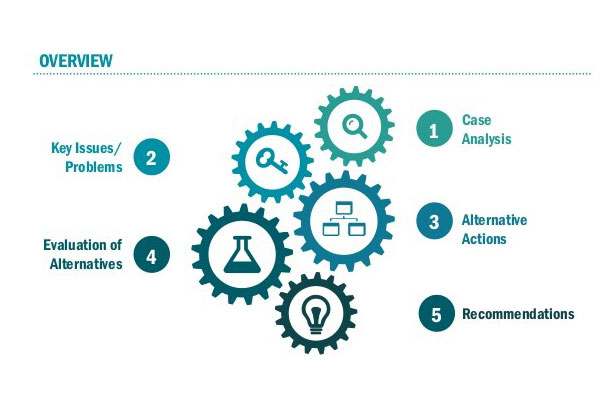Marketing KPI: What Is It?
An organization uses a marketing KPI to evaluate a marketing campaign’s performance and measure its progress towards achieving goals. Companies use it to measure how successful or effective they have been in reaching their goals.
KPIs include everything from digital marketing to content marketing to email marketing and more! Keeping track of the proper marketing KPIs will improve your company’s budgets and strategies.
This blog will provide an overview of some marketing KPIs you should try out to improve marketing results. Scroll down to read more!
Marketing KPIs You Need To Measure
1. Attributing Revenue to Marketing
What revenue have your marketing campaigns generated for your company?
Marketing revenue attribution is a marketing KPI that indicates the amount of revenue generated by your marketing efforts.
The value of your team’s efforts can be assessed by tracking this information. You get a clearer picture of your customer engagement strategy with this KPI.
By analyzing your performance and understanding your marketing channels, you can make better decisions, change your campaigns, optimize your ROI, and capture more leads.
2. Increase in sales
Increasing sales or revenue from sales indicates an increase in your business.
You should measure sales growth as a marketing KPI because marketing campaigns and strategies significantly affect sales.
It identifies and tracks growth trends and helps you make changes to your marketing strategies, which improves your organization’s overall health.
3. Cost of acquiring new customers
Customer Acquisition Cost is a crucial marketing metric that looks at all the marketing expenses and costs required to sign up a new customer.
It allows you to compare whether each marketing channel is effective in acquiring new customers. Also, determine whether your sources are worth your time and money and whether they will increase your profits.
This can be used to determine whether your costs are higher or lower than your revenue. The CAC is calculated by dividing the total costs of acquisition by the number of new customers gained over time.
4. Website Traffic to Leads Ratio
All the people who visit your website are considered your website traffic. All of them are, therefore, potential leads that can be converted into customers.
It is essential to focus on the total number of website visitors who have converted into actual leads, making your website traffic-to-lead ratio a proper marketing KPI. Dividing total visitors to your website by leads generated in a specific time will give you your conversion rate.
Using this ratio, you can measure the quality of your website traffic and figure out when to change your website copy, design, or CTA. As well as estimating conversion rates, it lets you keep track of your daily, weekly, monthly, and annual progress!
5. Engaged Users
Engagement rate is simply the amount of interaction you have with your audience due to your marketing campaigns or content creation. This includes reactions from your social media followers, such as clicks, likes, shares, comments, etc.
An excellent marketing KPI allows you to quantify each interaction with your audience. Keeping track of your engagement rates will enable you to see how your website grows and performs.
You can identify potential issues and make adjustments to your marketing campaign to increase engagement levels, increasing conversion rates.
6. Total conversion rate
Would you like to know how many people performed an action you wanted them to act? That’s precisely what conversion rates are calculated for! A marketing KPI that shows the percentage of people who converted into customers is essential.
Keeping track of your conversion rates at each stage of the marketing process helps you identify pain points, tell you whether your methods are effective or not, and enables you to improve your marketing strategies.
By measuring the effectiveness and success of marketing campaigns, you can optimize your website as well.
7. MQL/SQL Ratio
In marketing, qualified leads or MQLs are leads with a high probability of becoming your customers. Leads that are qualified for a sale, or SQLs, are prospects who are likely to buy.
The MQL to SQL ratio is the percentage of MQLs that are converted to SQLs. Measurement of this marketing KPI shows the sales and marketing teams’ cooperation.
You can use this ratio to measure how efficiently your marketing team qualifies and screens leads. This tool also tracks the time it takes for conversions to occur and helps you make adjustments to your marketing campaigns and communications.
8. Order value on average
Your average order value is the marketing KPI you should be measuring if you want to understand your customers’ purchasing patterns and behavior.
AOV is the amount of money that each customer spends while placing an order. A percentage of your total revenue can be calculated by dividing the charges by your total revenue.
You can plan your pricing strategies and online marketing strategies according to your customers’ buying patterns when you know your company’s!
9. Click-Through-Rate
Click-through rate refers to the ratio of how many times people have been exposed to a link and how many times they have clicked on it.
It is a great KPI to start with when you want to measure the success of your online marketing activities such as Facebook, Instagram, LinkedIn advertisements, or your search engine rank.
You can use it to measure the effectiveness of all your online campaigns, understand your customers and their needs, and learn what works as you try to reach your target audience.
You can compare your ad performance on different sites by tracking your CTR!
10. Unsubscribe Rate
Tracking when you lose customers is as vital as following when you gain them, so unsubscribe rates are a critical marketing KPI you should consider for your company. It is simply the number of customers who have clicked the ‘unsubscribe link from your email subscriptions.
An email marketing campaign’s unsubscribing Rate tells you about its effectiveness. If you send an email that synchronizes with your subscribers’ interests, delivers value, and keeps the frequency right, it shows how well you are doing.
Furthermore, you can determine how soon subscribers unsubscribe and measure engagement levels to improve your campaign.
11. Bounce Rate
Visitors who ‘bounce’ or exit from your website without viewing another page of your site are referred to as bounce rates. This KPI is important because it calculates the average session duration and average pages per session and whether your viewer found what they were looking for on your site.
Monitoring your bounce rate allows you to evaluate how long visitors stay on your site and determine if your content and design attract and retain customers effectively.
Identifying the issues with your site and making the needed changes will help you improve it.
12. Rate of Customer Retention
Customers who have remained loyal to your products and services and made repeat purchases over a specific time are your customer retention rate.
All in all, it’s a great marketing KPI because it measures customer satisfaction levels, which are a reflection of your brand’s performance. It is helpful to know how many customers are returning and their purchasing habits based on retention rates.
Additionally, it allows you to evaluate your customer engagement levels and determine the changes and marketing trends that affect your users. As a result, you can plan your retention strategies accordingly!
Conclusion
The more you understand your marketing process, the better you know how each action affects your business. Why not track your KPIs? With our list of marketing KPIs to track closely, you’re more than ready to start tracking your marketing efforts.






































